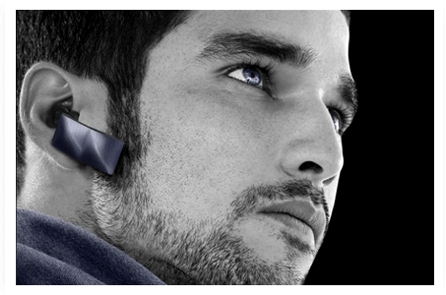Speech tech to dominate wearables in 2015
Why SIRI was just the first step towards the ultimate “voice interface”
There has been a lot of excitement about smart watches (Pebble, Samsung Galaxy Gear) and smart wearable devices in 2013. While those first products may not have lived up to the hype, the next wave will be more interesting and much smarter.
Smarter watches
The first smart watches from Sony and Samsung were not commercially successful. They didn’t bring anything new. Getting notifications on the wrist might be cool but a 1-day battery life is much less cool.
When the iPhone was launched in 2007, it was the best phone ever. The first Smart watches are not the best watches. They are competing with Swiss luxury watches and many people would prefer to wear a nice Tag Heuer Monaco or an Omega SeaMaster than a Samsung Galaxy Gear. True, they are not in the same price range but to be successful smart watches have to be either the best watches or bring something truly unique. It is likely that Apple is taking its time because it is working on something unique, something that takes full advantage of the fact that a watch is constantly on the wrist. The interesting news is that some companies are already taking advantage of that

Basis is a start-up which has designed a unique smart watch, the Basis band. This smart watch contains some of the most advanced sensors on the market, continuously capturing heart rate patterns, user motion, calorie expenditure by activity, even perspiration and skin temperature. It takes full advantage of being constantly touching the end-user skin. From that angle, it is much smarter than any other watches.
With an estimated 5 million smart(er) watches to ship in 2014 and the official launch of Google Glass, the wearable connected devices market is poised to go well beyond early adopters. The IDC tempers long-term tablet forecast as competing technologies (i.e. wearable computing) heat up.
Familiar analog objects will become connected and smarter. There will be no touch screens nor tiny physical buttons to control them. As a consequence, voice will become the main user interface. In order to achieve a great user experience, advanced speech recognition and natural language understanding technologies will be needed.
A smart ring
As if a smart watch were not James Bond enough, here comes the smart ring. A project to develop a smart ring has completely blown away its funding objectives on Indiegogo. Called Smarty Ring, it helps users control their smart phones and can also be used as a clock, a stopwatch and a countdown timer. The clear trend behind this example is the smartization of smaller and smaller objects
.
Smarty Ring is not only a clock, but a stop watch and countdown timer. It also helps control your smartphone. Photo from the project page, final product might look differently
Smart objects will soon become very difficult to identify and notice. People won’t be able to see that an object is smart. This will bring a new set of issues ranging from social, political and personal data security.
Google Glass and smart glasses
While Google Glass has not officially launched, it has created a tremendous amount of interest and has sparked the imagination of an army of developers and entrepreneurs. Steve Jobs once said that the computer was the bicycle of the mind. Google Glass could become the companion to your mind. Laura Baverman, a tech jounalist based in NY, made an interesting comment about Google Glass in a USA Today article
But it wasn’t until Google Glass was on my face, and a Glass Guide was talking me through its functions and features, that I really got it. Glass is like an add-on to my brain

Google Glass — photo from Google
Google Glass is extremely powerful but also potentially socially disruptive. We can expect that the next iterations of smart glasses will be even more disruptive because people won’t be able to notice that a glass is smart or not.
In 5 years, Google Glass could be replaced by Google Lens (don’t laugh, smart contact-lens are not so far-fetched. Some early prototypes are already working in labs). With Google Lens on, nobody will be able to tell if you are naturally smart or if your mind has been enhanced thanks to good answers being displayed straight to your retina.
But before this, we can expect to hear people saying “ok glass” as voice is the most natural user interface for interacting with Google Glass.
Ok glass — the magic word to wake-up Google Glass - picture from Google
A start-up called META is also working on an interesting pair of smart glasses to be delivered in June 2014. It will offer a giant 3D holographic HD screen, 40-degree field of view and a very exciting high-end sleek light weight design. It really looks cool. According to an EnGadget article:
The two bedrock technologies that set Meta apart from others in the augmented reality computing space are its surface tracking and hand tracking algorithms. These algorithms are based upon the pioneering work of Steve Mann, Meta’s chief scientist, and are essential to enabling quality holographic computing constructs that Meta wants to build.
![]()

Meta Pro promises Tony Stark-style computing with a $3,000 pair of sunglasses
In this case, the main interface will remain hand gesture not necessarily voice. What I like about this product is that technology is blending with style (and the fact that you could experience what it feels like to be Tony Stark).
Fusion of fashion and technology
With the fusion of fashion and technology becoming a reality, more and more smart wearables with no touch screens and no physical interface will be released. Some companies such as Jawbone have been quite successful in the intersection of fashion and technology.

A JAWBONE headset — photo from Jawbone.com
What’s also fascinating is the fact that traditional sports and fashion companies are also launching connected products, like Nike with Nike+.
In 2014, we can expect more fusion between the 2 worlds with some surprising acquisitions and interesting moves. As an example, Apple’s Hire Of Burberry’s Angela Ahrendts is probably not only about retail. To be truly successful, the iWatch will need to be a fashion icon, not just a tech product.
One of the most striking examples of fashion meets technology is the ‘M’ from Motiif, the first smart trench coat.
‘M’ is the world’s first smart trench coat that keeps you connected to & informed about the world around you.

The ‘M’ — the world’s first smart trench coat
Lauren Bowker’s work and vision is particularly interesting. She believes that technology IS magic:
I believe technology IS magic. My vision is to create a world of seamlessly captivating science; through exquisite couture, luxury products and opulent materials; in lieu of the believer searching for special pieces and unique experiences.
To do this I will build a House and environment that both appeal intriguingly and aesthetically. That is well informed, well educated, inventive and sensitive to both Technology and Design.
Offering luxury attire enhanced with technical magic.
I trust in the unseen world around us, it can offer beauty, magic and faith. I want others to see what I see.
To me, there are very few things which seem more magic than an object understanding your voice and answering you back.
Speech recognition technologies are something I truly care about. I work for OnMobile as General Manager France and CEO of Telisma, a company providing speech recognition solutions.
Last updated
Was this helpful?